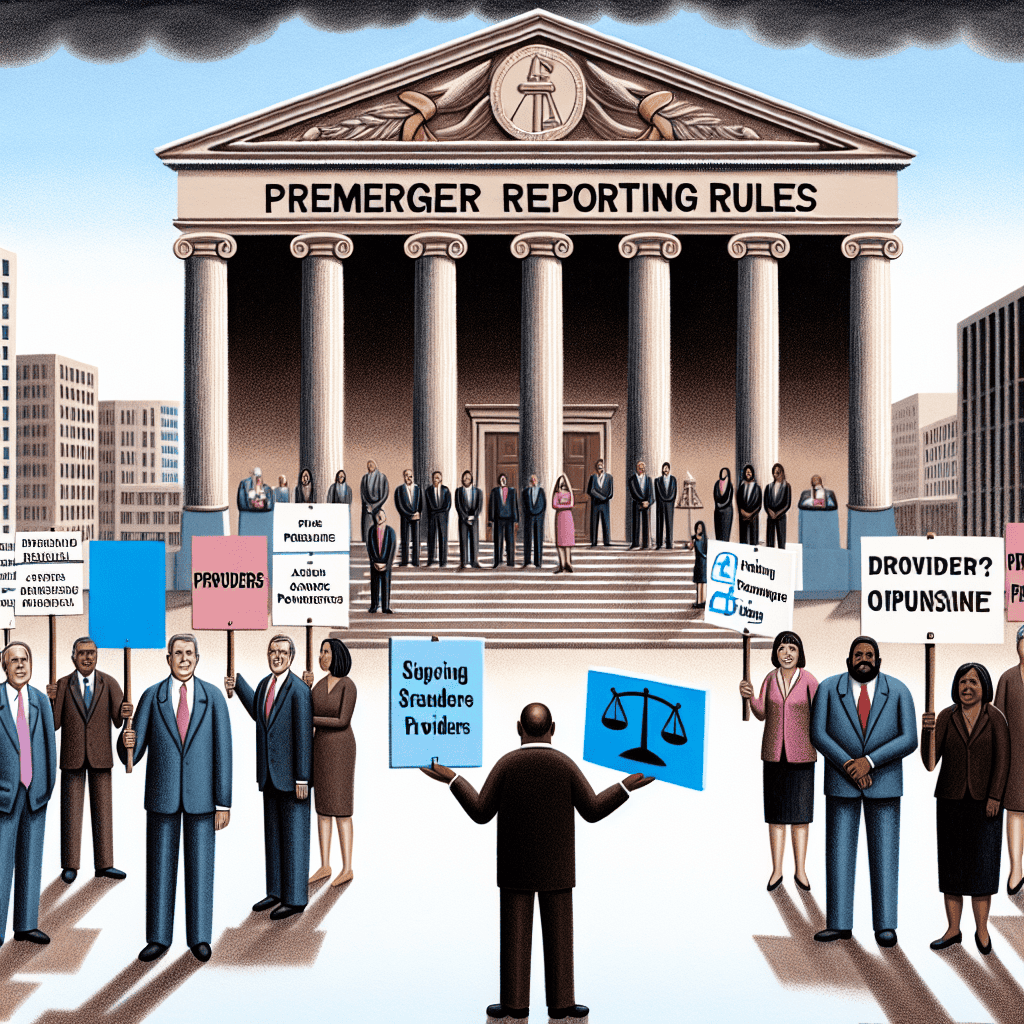FTC Expands Premerger Reporting Rules Despite Provider Opposition

The Federal Trade Commission (FTC) has recently expanded its premerger reporting rules, a move that has sparked significant debate and opposition from various stakeholders, particularly within the provider community. This article delves into the intricacies of these new regulations, the reasons behind the opposition, and the potential implications for the market. By examining the historical context, the specifics of the new rules, the arguments from both sides, and the broader economic impact, we aim to provide a comprehensive understanding of this pivotal regulatory shift.
Historical Context of FTC Premerger Reporting
To fully grasp the significance of the FTC’s recent changes, it’s essential to understand the historical context of premerger reporting in the United States. The Hart-Scott-Rodino Antitrust Improvements Act of 1976 (HSR Act) laid the foundation for premerger notification and review processes. This legislation was designed to prevent anticompetitive mergers and acquisitions by requiring companies to file detailed reports with the FTC and the Department of Justice (DOJ) before completing certain transactions.
Over the years, the HSR Act has undergone several amendments to address evolving market dynamics and regulatory needs. Initially, the focus was on large-scale mergers that could significantly impact market competition. However, as the business landscape became more complex, the need for more nuanced and comprehensive reporting became apparent.
The FTC’s role in this process has been to scrutinize proposed mergers and acquisitions to ensure they do not harm competition or consumer welfare. This involves analyzing market concentration, potential barriers to entry, and the overall impact on consumers. The FTC’s authority to challenge or block mergers has been a critical tool in maintaining competitive markets.
Despite these efforts, critics have argued that the existing premerger reporting framework has been insufficient in addressing the challenges posed by modern business practices, such as digital platforms and global supply chains. This has led to calls for reform and expansion of the reporting requirements to better capture the complexities of today’s economy.
Details of the Expanded Premerger Reporting Rules
The FTC’s recent expansion of premerger reporting rules represents a significant shift in regulatory approach. The new rules aim to enhance transparency and provide regulators with more comprehensive information to assess potential anticompetitive effects. Key changes include:
- Lower Reporting Thresholds: The FTC has lowered the thresholds for reporting certain transactions, meaning more mergers and acquisitions will now require premerger notification. This change is intended to capture smaller deals that could still have significant competitive implications.
- Expanded Information Requirements: Companies are now required to provide more detailed information about their business operations, market dynamics, and potential competitive impacts. This includes data on supply chains, customer relationships, and future business plans.
- Focus on Digital Markets: Recognizing the growing importance of digital platforms, the new rules place a greater emphasis on transactions involving technology companies and online marketplaces. This reflects concerns about the concentration of power in the digital economy.
- Increased Scrutiny of Vertical Mergers: The FTC is placing more emphasis on vertical mergers, where companies at different stages of the supply chain combine. These mergers can have complex competitive effects, and the new rules aim to better assess their impact.
- Enhanced Collaboration with International Regulators: Given the global nature of many industries, the FTC is working more closely with international counterparts to ensure consistent enforcement and address cross-border antitrust concerns.
These changes have been met with mixed reactions. Proponents argue that they are necessary to address the challenges of modern markets and prevent anticompetitive behavior. However, critics, particularly from the provider community, have raised concerns about the increased regulatory burden and potential stifling of innovation.
Provider Opposition to the New Rules
The expansion of premerger reporting rules has faced significant opposition from various stakeholders, particularly within the provider community. Providers argue that the new regulations impose an undue burden on businesses, especially smaller companies that may lack the resources to comply with the enhanced reporting requirements.
One of the primary concerns is the increased cost and complexity of compliance. The expanded information requirements necessitate more detailed data collection and analysis, which can be resource-intensive. For smaller providers, this could divert resources away from core business activities and stifle growth and innovation.
Additionally, providers argue that the lower reporting thresholds could lead to an increase in the number of transactions subject to review, potentially delaying or derailing deals that could benefit consumers. This is particularly concerning in fast-paced industries where timely execution of mergers and acquisitions is critical to maintaining competitive advantage.
Another point of contention is the focus on digital markets. While the intent is to address the unique challenges posed by digital platforms, providers argue that the rules may not adequately account for the dynamic nature of these markets. Rapid technological advancements and shifting consumer preferences can quickly alter competitive dynamics, making it difficult to accurately assess the long-term impact of a merger.
Despite these concerns, the FTC has defended the new rules as necessary to protect consumers and promote competition. The agency argues that the expanded reporting requirements will provide regulators with the information needed to make informed decisions and prevent anticompetitive behavior.
Case Studies and Examples
To better understand the potential impact of the expanded premerger reporting rules, it’s helpful to examine case studies and examples of past mergers and acquisitions that have faced regulatory scrutiny. These cases highlight the complexities of assessing competitive effects and the challenges of balancing regulatory oversight with business needs.
One notable example is the merger between AT&T and Time Warner, which faced significant antitrust challenges. The DOJ argued that the merger would harm competition by giving AT&T control over Time Warner’s vast content library, potentially leading to higher prices for consumers. However, AT&T countered that the merger would create efficiencies and enhance competition by allowing the company to better compete with digital giants like Netflix and Amazon.
Ultimately, the merger was approved, but the case underscores the complexities of assessing vertical mergers and the need for comprehensive information to evaluate potential competitive effects. The expanded premerger reporting rules aim to address these challenges by providing regulators with more detailed data on market dynamics and potential impacts.
Another example is the acquisition of Whole Foods by Amazon, which raised concerns about the impact on the grocery industry. Critics argued that the merger would give Amazon an unfair advantage by leveraging its online platform to dominate the market. However, the FTC ultimately approved the deal, citing the competitive nature of the grocery industry and the potential benefits to consumers.
These cases illustrate the importance of a robust premerger review process and the need for comprehensive information to assess potential competitive effects. The expanded reporting rules aim to enhance this process by providing regulators with the data needed to make informed decisions.
Economic Implications of the Expanded Rules
The expansion of premerger reporting rules has significant economic implications, both for businesses and





